A common perception of looking at “overdressed,” fully covered hijabi women during the summer is that they are “poor oppressed things” who have to cover up in black* even when the sun is blazing hot!
[*Black is not required, but anyway…]
Muslims consoled themselves with memes of “Hell is hotter,” and rightly so! So what if we must tolerate the summer heat in a hijab? We do it in obedience to our Creator and He will reward us for it. Besides, the societal harms of immodesty carry greater consequences than personal discomfort.
All these are solid arguments that we, Muslims, have preached and lived by, alhamdulillah. But what if the premise of the objection was incorrect as well? Who said undressing under the hot sun is “cooler” and better for us?
One of the things that intrigued scientists many years ago was how Bedouins living in hot deserts would not only dress in layers but also wear black! This went against conventional wisdom of wearing light and white clothes. They researched and published a study in the Nature journal in 1980 titled ‘Why Do Bedouins Wear Black Robes in Hot Deserts?’
“It seems likely,” the scientists wrote, “that the present inhabitants of the Sinai, the Bedouins, would have optimised their solutions for desert survival during their long tenure in this desert. Yet one may have doubts on first encountering Bedouins wearing black robes and herding black goats. We have therefore investigated whether black robes help the Bedouins to minimise solar heat loads in a hot desert.”
Science Behind the Bedouin’s Dress
The scientists found out that the cooling action inside the loose robes worn by Bedouins happens by convection – either through a bellows action, as the robes flow in the wind, or by a chimney sort of effect, as air rises between the robe and skin.
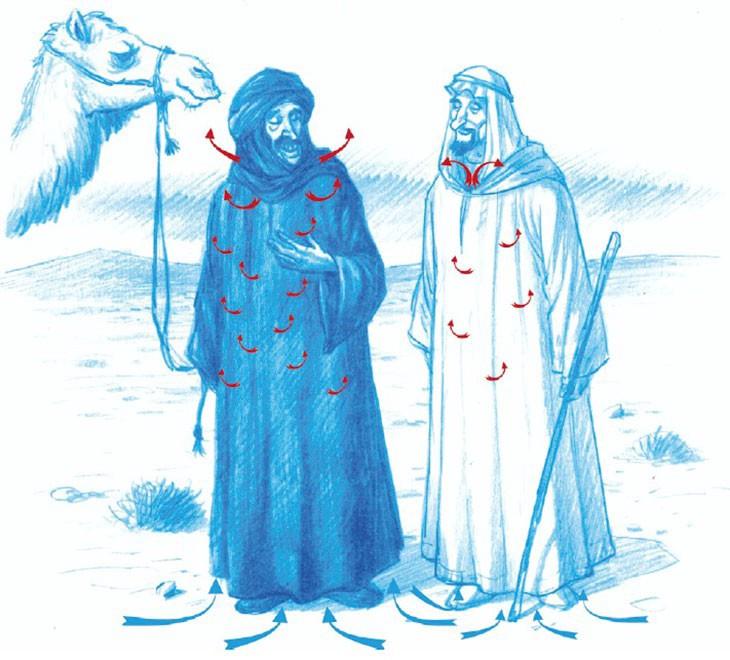
Bedouins wear loose clothing – large robes covering them from head to toe to protect them from the sun, wind, and sand. The men first put on a large cotton shirt directly against the skin. The latter is then itself covered by a loose garment. The outer fabric is therefore not in contact with the skin. In addition, air circulates easily between the two garments.
The air heated by the outer fabric rises inside and sucks colder ambient air under the dress. In this convection movement, it is as if the two dresses were playing the role of bellows, pushing hot air out through the fabric and down the neckline.
The key to staying cool by Bedouins in the desert is in the thickness of the fabric. The outer layer of fabric does get hotter because the black color absorbs more heat, but that heat does not get transmitted to the skin because of the thick fabric. On the other hand, thin black clothing transmits that heat to the skin, making a person hotter.
Summer layering might seem like an oxymoron but that’s “the recipe for looking (and feeling) cool in the heat” say style gurus. The thickest fabric should be furthest away from your body.
Harms of Exposing in Summer Heat
According to the Cleveland Clinic:
The immediate danger of too much sun is sunburn. If you looked at sunburned skin under a strong microscope, you would see that the cells and blood vessels have been damaged. With repeated sun damage, the skin starts to look dry, wrinkled, discolored, and leathery. Although the skin appears to be thicker, it actually has been weakened and, as a result, it will bruise more easily.
However, the sun’s most serious threat is that it is the major cause of skin cancer, which is now the most common of all cancers. Doctors believe that most skin cancers can be avoided by preventing sun damage.
The Fiqh of Clothes and Haya
Clothes are a blessing of Allah upon us. Allah says in Surah al-A’raf, 26-27:
O children of Adam, We have bestowed upon you clothing to conceal your private parts and as adornment. But the clothing of righteousness – that is best. That is from the signs of Allah that perhaps they will remember.
O children of Adam, let not Satan tempt you as he removed your parents from Paradise, stripping them of their clothing to show them their private parts. Indeed, he sees you, he and his tribe, from where you do not see them. Indeed, We have made the devils allies to those who do not believe.
Dressing modestly has great impact on the health of a society. It is not a secret that the culture of women undressing has more to do with following desires than any individual or societal benefit. We are well aware of what is happening in immodest societies – the disappearing family structure, abuse of women, and loneliness.
Alhamdulillah for Islam and the emphasis on Haya that Muslim communities continue to be positive, healthy, and largely safe from the ills of immodesty.
References
Amiram, S., Richard, T. C., Virginia, F., & Arieh, B. (1980). Why do Bedouins wear black robes in hot deserts? Nature, 373–375.
Cleveland Clinic. (2019, October 10). Sun Damage: Protecting Yourself. Retrieved from Cleveland Clinic: https://my.clevelandclinic.org/health/articles/5240-sun-damage-protecting-yourself
Tss, M. (2020, October 20). Dress in black … to protect yourself from the sun. Retrieved from Medium: https://mao-tss.medium.com/dress-in-black-to-protect-yourself-from-the-sun-f300f2f0b2a6

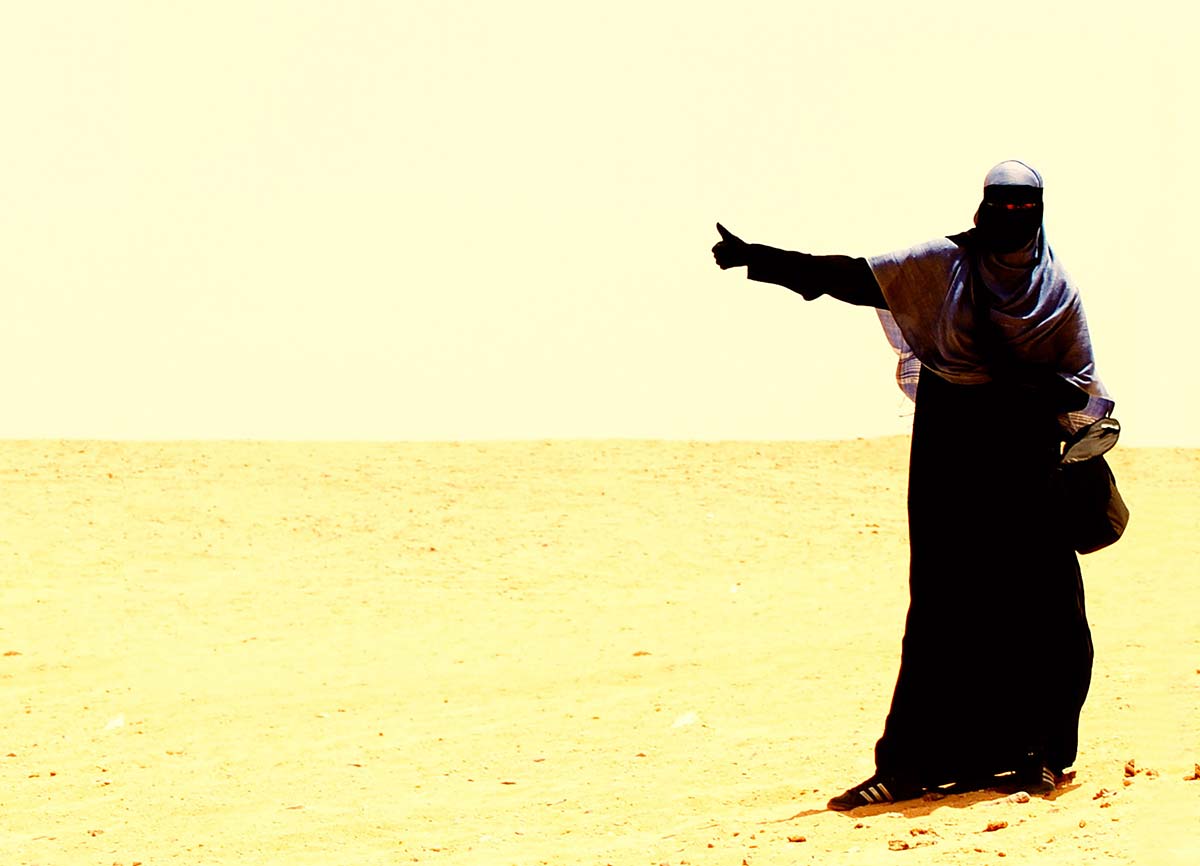
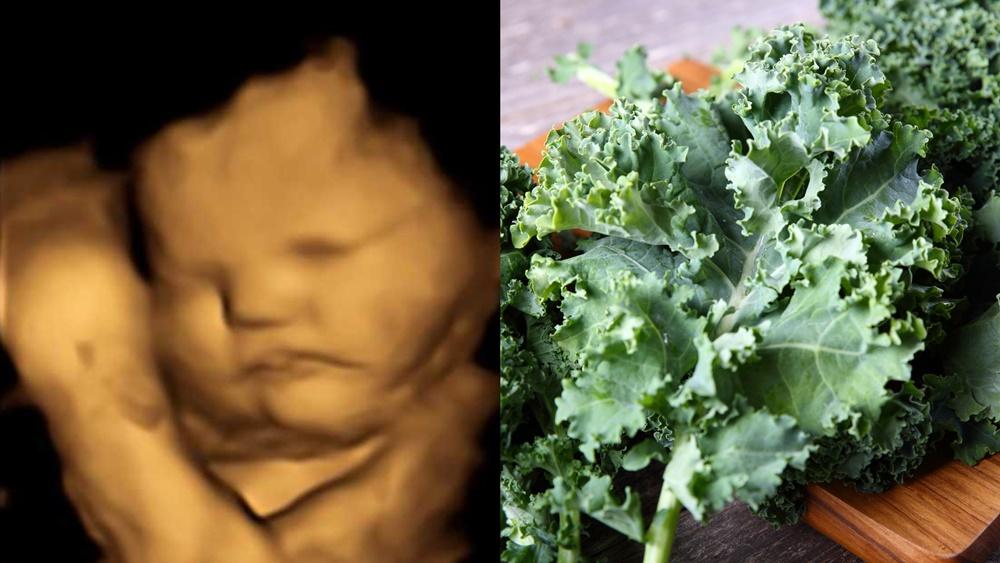
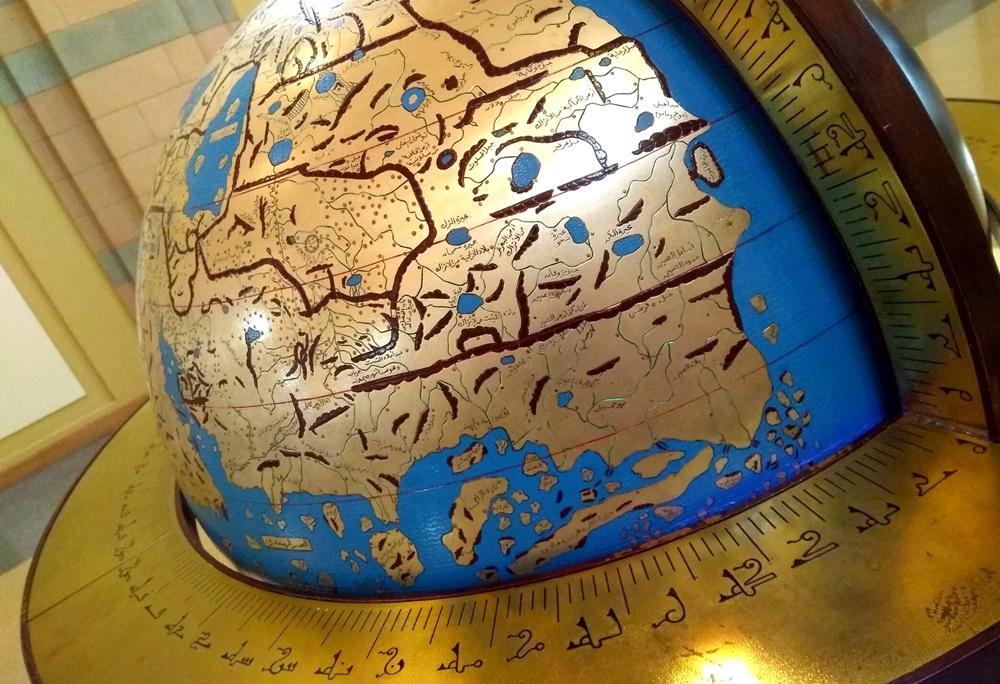



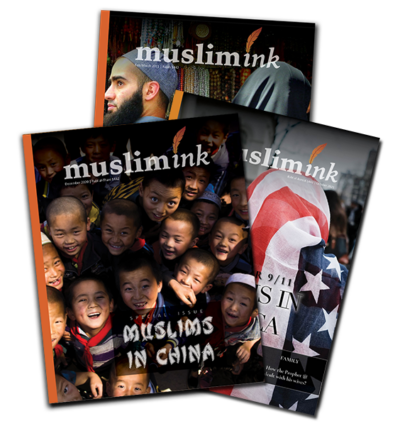
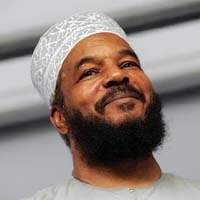 Dr. Bilal Philips
Dr. Bilal Philips